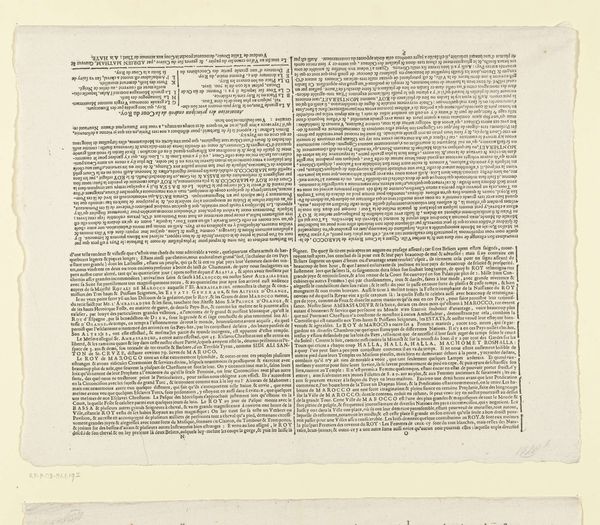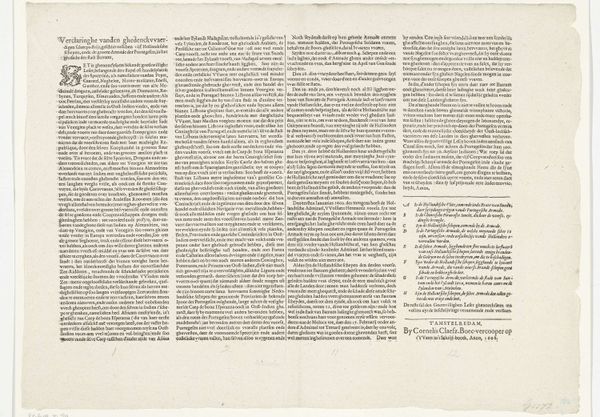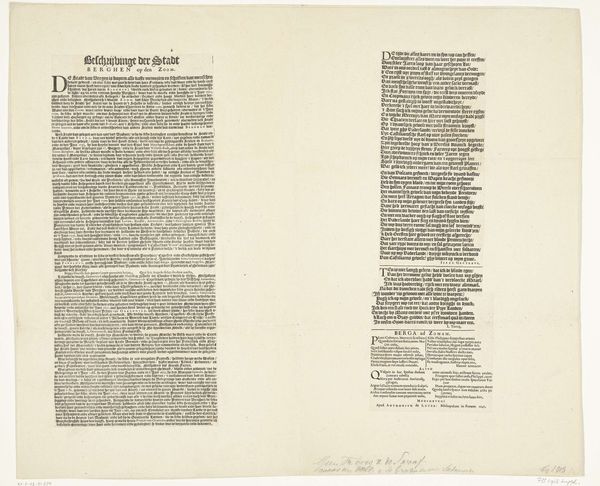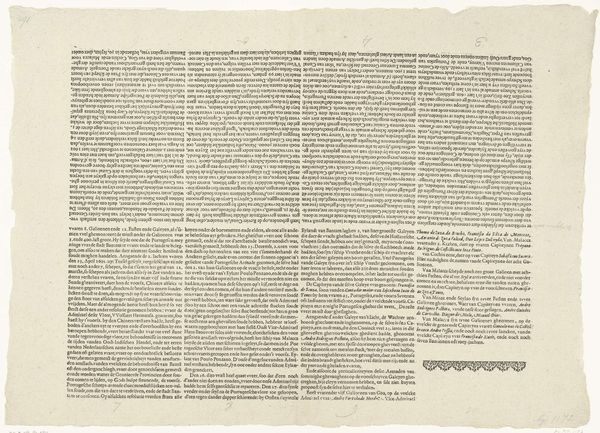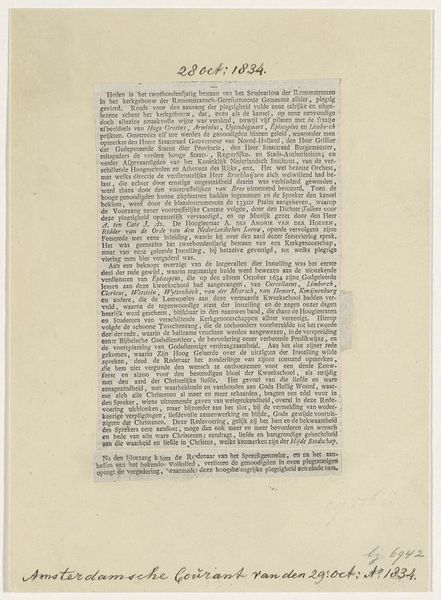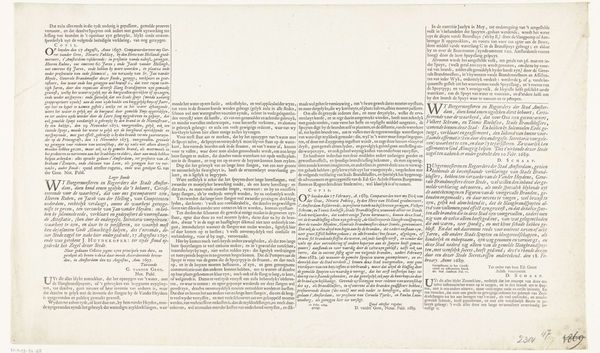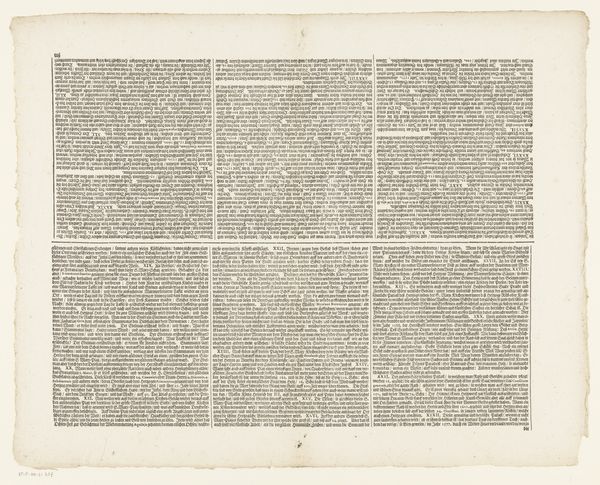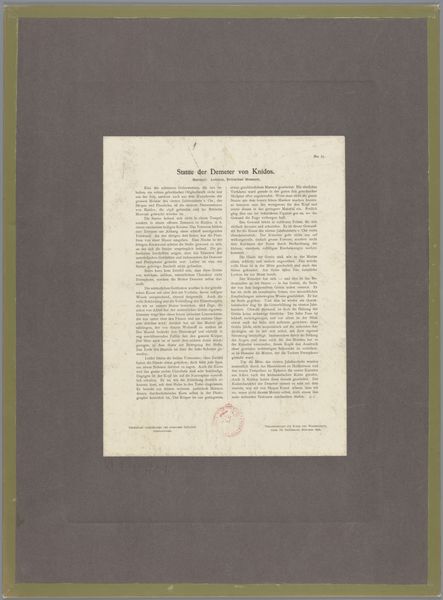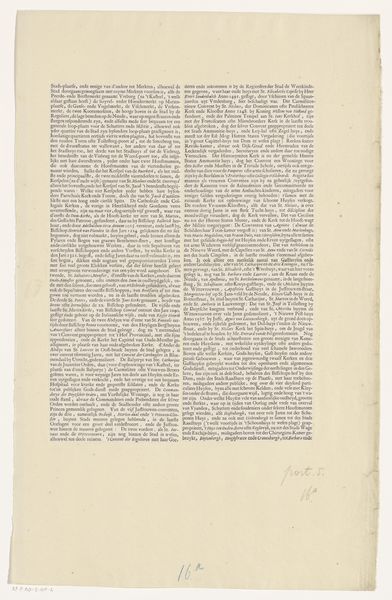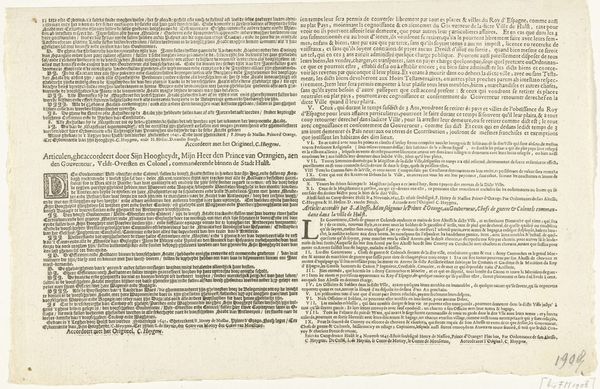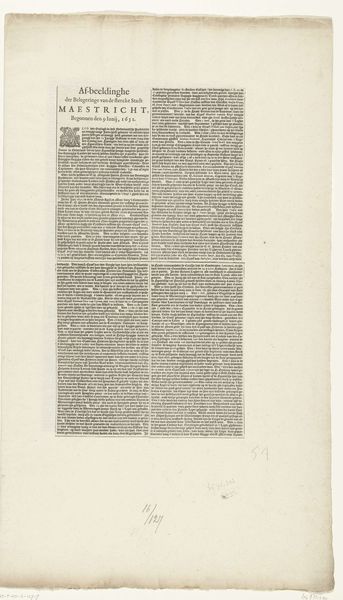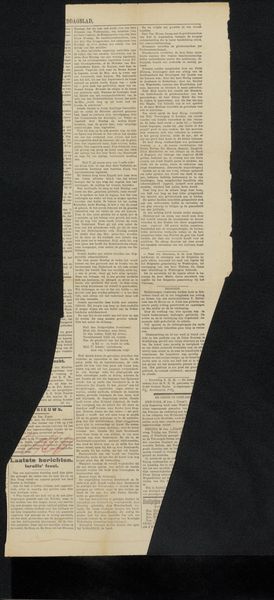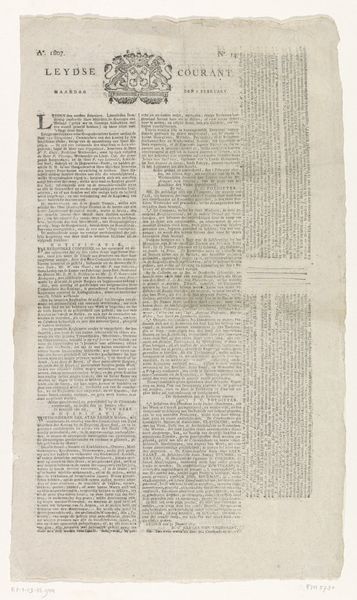
graphic-art, print, engraving
#
graphic-art
# print
#
engraving
Dimensions: height 420 mm, width 110 mm
Copyright: Rijks Museum: Open Domain
This is a text sheet titled "Siege of Gulik, 1610," created by Claes Jansz. Visscher. Notice the dense blocks of text, a common visual symbol in 17th-century printed media. These sheets, filled with proclamations, news, and arguments, were more than just information carriers; they were powerful tools in shaping public opinion. The act of reading itself becomes a motif. Consider the role of text in other eras—from ancient Egyptian hieroglyphs to medieval illuminated manuscripts. Text often represents authority, knowledge, and control. We can trace how the presentation and accessibility of text mirror shifts in power structures. In the Reformation, for example, reformers emphasized individual reading to challenge the authority of the Catholic Church. The very act of disseminating information through text carries an emotional charge. These printed words could ignite passions, incite action, and even spark conflict. What collective anxieties and aspirations are reflected in this historical document, and how do they continue to resonate with us today? Such non-linear progressions of symbols continue to evolve and resurface across time and space, taking on new meanings.
Comments
No comments
Be the first to comment and join the conversation on the ultimate creative platform.
